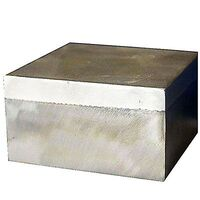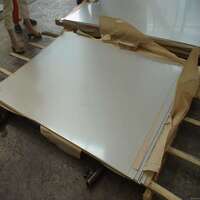1. Introduction
On May 21, 2024, global architecture firm Foster + Partners unveiled renderings for a new sustainable office complex in Copenhagen featuring an innovative titanium-clad facade—a testament to the growing adoption of advanced clad metals in high-performance building design. This development underscores a broader industry shift toward durable, aesthetically versatile, and eco-conscious exterior solutions.

The term ‘metal clad‘—often written as ‘metalclad’—refers to composite materials or structures where a base metal is bonded with another metal layer to enhance performance, corrosion resistance, or visual appeal. Understanding the clad metal meaning is essential for professionals navigating modern construction, manufacturing, and electrical engineering.
2. What Is Metal Clad?
Metal clad (or metalclad) describes any system or product where one metal is layered over another through mechanical bonding, roll bonding, explosion welding, or electroplating. This process creates clad metals that combine the structural strength of a base material—such as carbon steel—with the surface properties of a more resilient or decorative metal like stainless steel, copper, or zinc.
Common examples include aluminum clad steel, stainless clad aluminum, and copper nickel clad. These hybrid materials are widely used in everything from building envelopes to piping and electrical wiring.
3. Metal Clad in Building Envelopes
In architecture, metal clad systems dominate contemporary exteriors due to their longevity, low maintenance, and design flexibility. Key applications include metal clad walls, metal clad roofs, and full metal facades.

Popular choices include:
- Corten steel facade: Known for its weathering properties and rustic aesthetic, corten steel siding develops a protective rust patina. While corten siding cost remains higher than standard steel, its minimal upkeep justifies long-term investment.
- Zinc facade: Offers self-healing properties and a sleek gray finish. A zinc clad roof or zinc clad dormer provides decades of service with virtually no maintenance.
- Copper siding: Ages gracefully to a green patina, often used in heritage or luxury projects.
- Aluminum clad sheet: Lightweight and corrosion-resistant, ideal for vertical standing seam metal siding or pac clad column covers.
Standing seam systems—such as colorbond standing seam or pac clad standing seam roof—are increasingly favored for their clean lines and water-tight performance. Similarly, exterior corrugated metal siding and corrugated steel facade options deliver industrial charm with robust durability.
4. Structural and Industrial Clad Metals
Beyond aesthetics, clad metals serve critical roles in heavy industry. Clad steel plates—like those made from mild steel plate bonded with stainless steel metal plate—are used in chemical processing, shipbuilding, and pressure vessels.
Alloy clad variants, including 2024 T3 clad and 7075 T6 clad aluminum, offer enhanced strength-to-weight ratios for aerospace applications. Meanwhile, boiler plate steel and thick steel plate products are often upgraded via cladding to resist corrosion in harsh environments.

Specialized plates such as chrome carbide overlay, inconel 625 weld overlay, and electroless nickel-coated surfaces address extreme wear and temperature challenges. Titanium clad and nickel brass clad copper further extend functionality in marine and petrochemical sectors.
5. Metal Clad in Electrical and Insulation Systems
Metal clad isn’t limited to exteriors. Metal clad electrical wire—also called armored cable—is widely used in commercial buildings for fire resistance and mechanical protection. Aluminum clad wire and cu clad wire variants optimize conductivity and shielding.
Similarly, aluminum clad pipe insulation enhances thermal efficiency in HVAC and industrial piping. Metal clad insulation systems integrate reflective barriers with vapor control, improving energy performance in metal clad buildings and sheds.
6. Material Comparisons and Selection Criteria
Choosing the right metal clad type depends on environment, budget, and design intent. For instance:
- Corten steel plate excels in outdoor sculptures and facades but requires proper drainage to avoid staining.
- Stainless steel plate grades (e.g., 316L SS plate) offer superior corrosion resistance for coastal installations.
- Aluminum diamond tread plate or aluminium checker plate provides slip resistance for walkways and industrial flooring.
- PAC CLAD HWP and pac clad coping systems deliver integrated solutions for roof edges and parapets.
Cost considerations matter: while corten steel siding cost may exceed traditional siding, lifecycle savings often offset initial expenses. Likewise, zinc metal siding commands a premium but lasts over 80 years.
7. Conclusion
Metal clad technologies continue to evolve, merging engineering precision with architectural expression. From steel clad houses featuring vertical standing seam metal siding to titanium-clad skyscrapers, these systems offer unmatched versatility. Whether specifying a stainless steel checker plate for industrial flooring or selecting aluminum clad stainless steel for piping, understanding the nuances of clad metal meaning and application ensures optimal performance and value.
Our Website founded on October 17, 2012, is a high-tech enterprise committed to the research and development, production, processing, sales and technical services of ceramic relative materials such as Metal. Our products includes but not limited to Boron Carbide Ceramic Products, Boron Nitride Ceramic Products, Silicon Carbide Ceramic Products, Silicon Nitride Ceramic Products, Zirconium Dioxide Ceramic Products, etc. If you are interested, please feel free to contact us.
